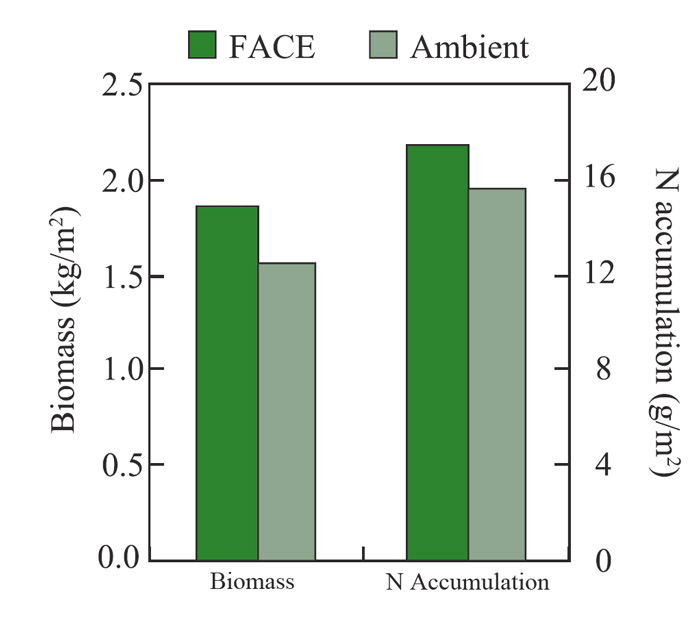| Tweet | Follow @co2science |
Paper Reviewed
Guo, J., Zhang, M., Wang, X. and Zhang, W. 2015. Elevated CO2 facilitates C and N accumulation in a rice paddy ecosystem. Journal of Environmental Sciences 29: 27-33.
Writing in the Journal of Environmental Sciences, Guo et al. (2015) note that "elevated CO2 can stimulate wetland carbon (C) and nitrogen (N) exports through gaseous and dissolved pathways," but they say that "the consequent influences on the C and N pools are still not fully known." And in light of this fact, they set up a free-air CO2 enrichment or FACE experiment in a paddy field in Eastern China, where -- after five years of CO2 fumigation to 200 ppm above the normal ambient CO2 concentration -- they studied the status of C and N in the entire plant-water-soil system.
This work revealed, as the four Chinese researchers report, that (1) "elevated CO2 stimulated rice aboveground biomass and nitrogen accumulation by 19.1% and 12.5%, respectively" (see figure below), that (2) "elevated CO2 significantly increased paddy soil total organic carbon (TOC) and total nitrogen (TN) contents by 19.1% and 12.5% , respectively, in the 0-15 cm layer, and 22.7% and 26.0% in the 15-30 cm soil layer," that (3) "averaged across the rice growing period, elevated CO2 greatly increased TOC and TN contents in the surface water by 7.6% and 11.4%, respectively," and that (4) "the TOC/TN ratio and natural δ15N value in the surface soil showed a decreasing trend under elevated CO2," while adding that "the above results indicate that elevated CO2 can benefit C and N accumulation in paddy fields."

Aboveground biomass and N accumulation of rice plants growning under elevated CO2 (FACE) and ambient CO2 conditions.
Last of all, Guo et al. write that "given the similarity between the paddies and natural wetlands, our results also suggest a great potential for long-term C and N accumulation in natural wetlands under future climate patterns," which is another significant boon for the biosphere that results from historical and still-ongoing anthropogenic CO2 emissions to the atmosphere.
Posted 21 July 2015



